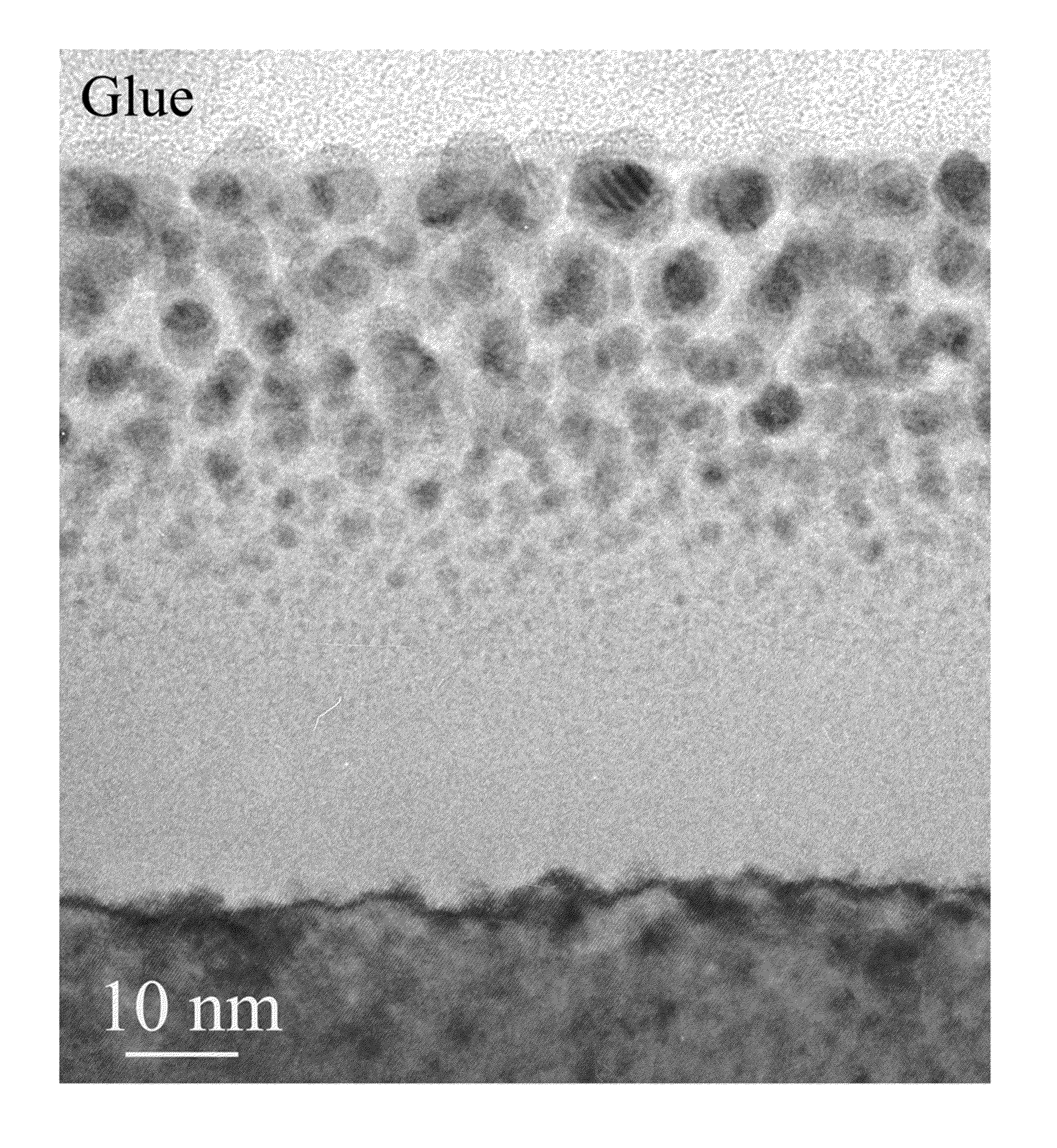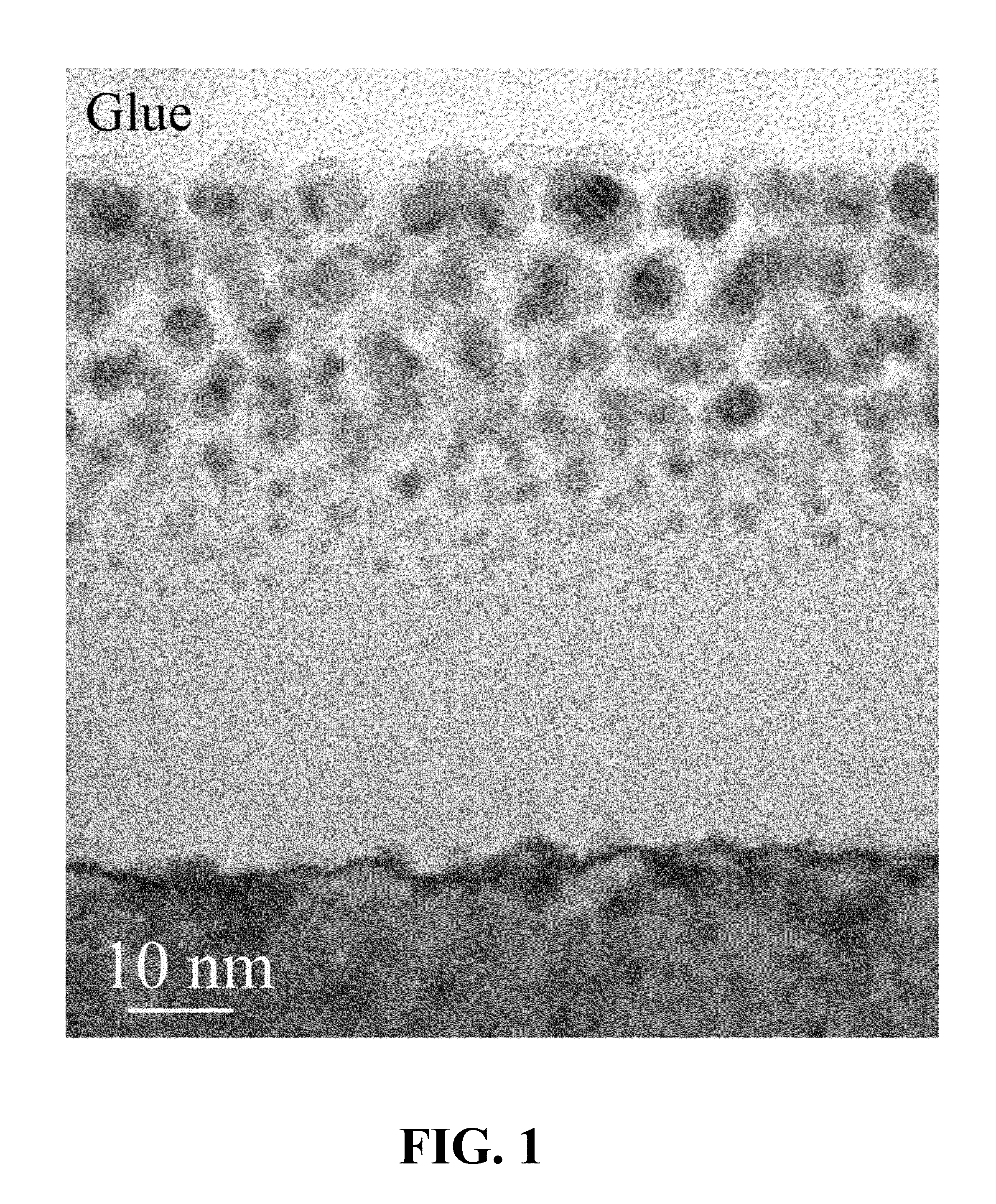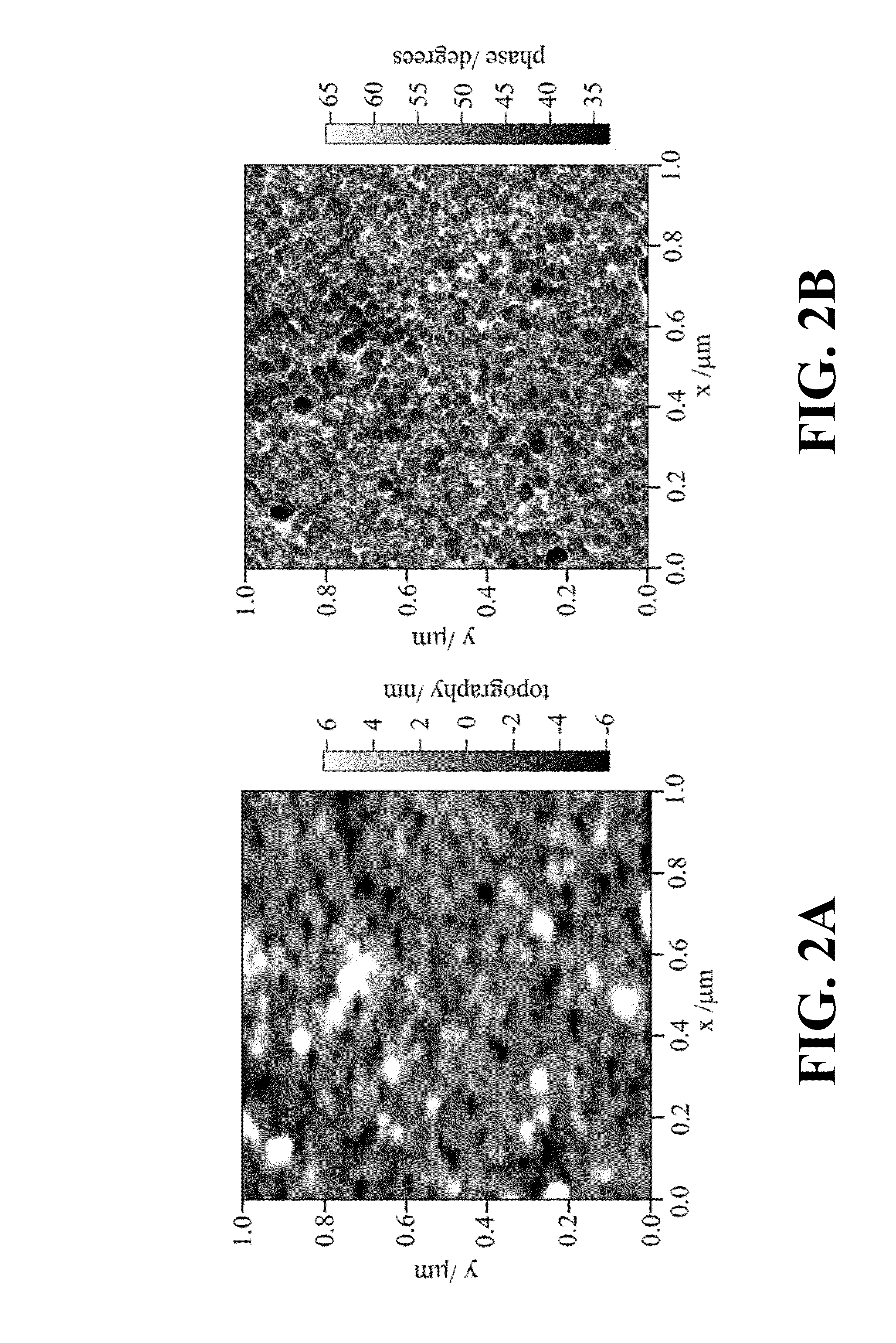Methods for fabrication of substrates for surface enhanced Raman spectroscopy
a technology of enhanced raman spectroscopy and enhancement substrates, which is applied in the field of methods for fabricating metal nanoparticle embedded enhancement substrates, can solve the problems of limited shelf life of substrates, high production costs, and existing fabrication techniques with regard to the choice of initial substrates
- Summary
- Abstract
- Description
- Claims
- Application Information
AI Technical Summary
Benefits of technology
Problems solved by technology
Method used
Image
Examples
Embodiment Construction
[0022]The inventors have found that methods for fabrication of metal nano-particle embedded enhancement substrates used for surface enhanced Raman spectroscopy (SERS) can be implemented, where the methods permit construction of surfaces with improved properties over prior art SERS surfaces. In certain embodiments of the methods of this invention, an initial substrate (matrix) is ion implanted with metal ions up to a dose and at a beam current density where metal nano-particles are formed in the matrix with or without subsequent thermal annealing. The implanted surface of the substrate is etched to partially expose the metal nano-particles. The matrix embedded with nano-particles is then utilized as a SERS substrate for detection of molecules adsorbed on it by surface enhanced Raman spectroscopy. The matrix is not limited to a plane surface but can be the surface of a detection probe such as the surface of an optical fiber, which can be used as a probe for in-vivo medical diagnostics...
PUM
| Property | Measurement | Unit |
|---|---|---|
| diameter | aaaaa | aaaaa |
| diameter | aaaaa | aaaaa |
| diameter | aaaaa | aaaaa |
Abstract
Description
Claims
Application Information
 Login to View More
Login to View More - R&D
- Intellectual Property
- Life Sciences
- Materials
- Tech Scout
- Unparalleled Data Quality
- Higher Quality Content
- 60% Fewer Hallucinations
Browse by: Latest US Patents, China's latest patents, Technical Efficacy Thesaurus, Application Domain, Technology Topic, Popular Technical Reports.
© 2025 PatSnap. All rights reserved.Legal|Privacy policy|Modern Slavery Act Transparency Statement|Sitemap|About US| Contact US: help@patsnap.com



